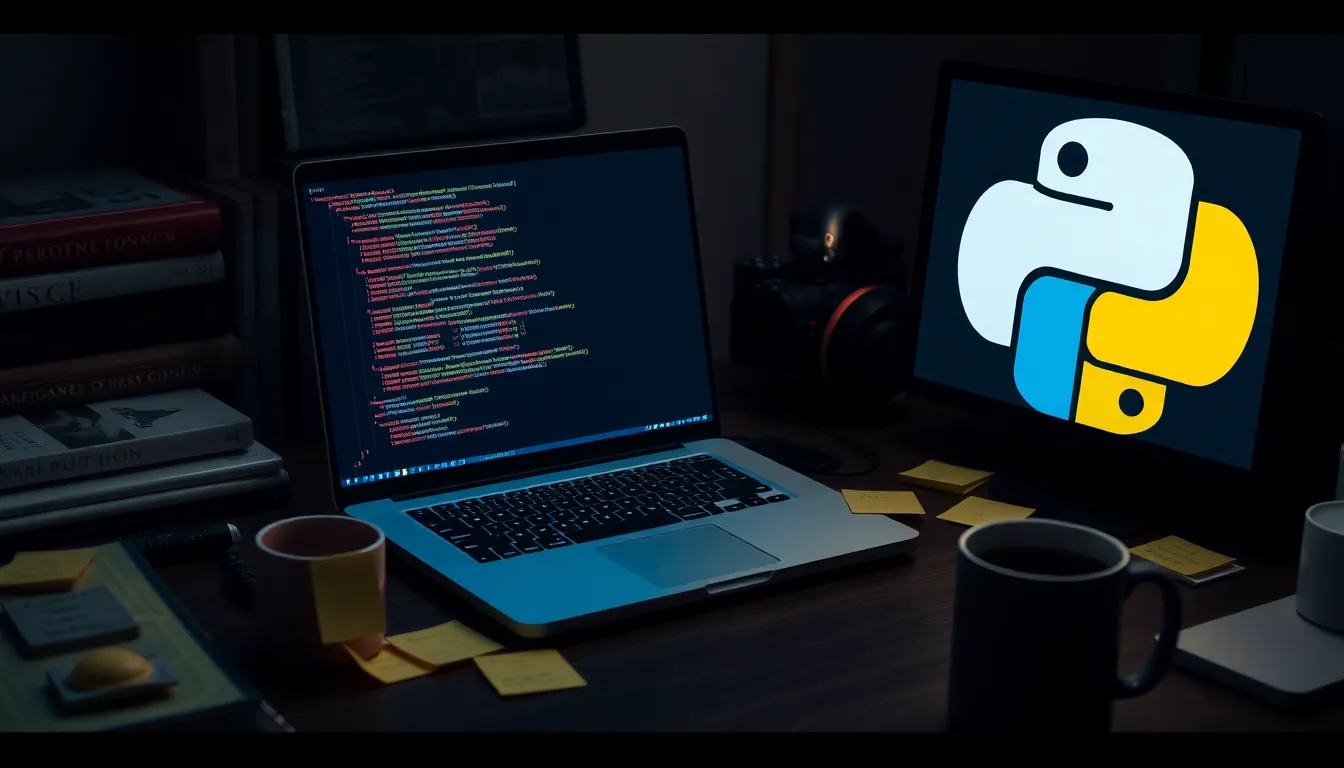Ready to dive into the world of gaming with Python? Whether you’re a coding newbie or a seasoned pro looking to level up your skills, this tutorial’s got you covered. Python is like the Swiss Army knife of programming languages—versatile, powerful, and surprisingly easy to wield. With just a few lines of code, you can create your own games and impress your friends, or at least distract them from your questionable life choices.
Table of Contents
ToggleOverview of Python Game Development
Python game development offers a versatile environment suitable for various game types, from simple 2D projects to intricate 3D designs. Utilizing popular libraries like Pygame and Panda3D, developers can create interactive experiences without extensive background knowledge. Understanding Python’s syntax can significantly simplify the coding process, making it accessible even for those new to programming.
Implementing game mechanics often involves using concepts such as game loops, event handling, and object-oriented programming. Game loops control the execution of the game, managing updates and drawing graphics on the screen efficiently. Event handling allows interaction, capturing player inputs like keyboard and mouse actions. Object-oriented programming introduces a structured approach, facilitating code reuse and organization, essential for larger projects.
Numerous tutorials and resources exist, aiding developers from beginners to advanced levels. Engaging online communities offer support, encouraging collaboration and knowledge sharing. Particularly, platforms like GitHub host many open-source projects, allowing individuals to learn from existing codebases.
Creating games with Python not only enhances programming skills but also fosters creativity. Developers can experiment with different genres and mechanics, resulting in unique gameplay experiences. Experimentation can lead to innovative ideas, making the design process both fun and educational.
Overall, Python game development serves as an excellent entry point for aspiring developers. The combination of an easy-to-learn language and a supportive community cultivates an enjoyable learning environment. Whether individuals are motivated by a desire to create or simply to explore, Python provides the tools to bring their visions to life.
Setting Up Your Environment

Setting up the environment is crucial for a smooth game development experience with Python. This section outlines the essential steps.
Installing Python
Select the latest version of Python from the official Python website. Download and run the installer, ensuring that you check the box to add Python to your system path. This step simplifies executing Python commands in your terminal. After installation, verify it by opening a command prompt and typing python --version. The terminal should display the installed version. Python’s integrated development environment, IDLE, comes with the installation. It provides a user-friendly interface for building and testing your games.
Choosing a Game Development Framework
Pygame serves as a popular choice among developers for 2D games. Its comprehensive libraries and easy-to-use functions facilitate quick game creation. Download Pygame using the command pip install pygame. Panda3D offers robust features for 3D game development, catering to more complex projects. For those interested in more advanced graphics and physics, this framework is ideal. Research other frameworks like Kivy or Godot to find one that aligns with specific project needs. Each framework has its strengths, making thorough exploration beneficial before deciding on the right one.
Building a Simple Game
Creating a simple game involves a few essential steps, starting with your game’s concept and design.
Game Concept and Design
Identifying the core idea for a game is crucial. Choose a genre that excites you, whether it’s platformer, puzzle, or adventure. Outline the game mechanics and rules, which clarify how players interact with the game world. Additionally, sketch characters and environments to visualize the final product. Focus on player experience; simplicity in design often leads to engaging gameplay. Many successful games feature clear objectives and gradual difficulty progression. Brainstorm unique elements that could set your game apart while ensuring it remains accessible. Emphasizing creativity allows for a rich gaming environment that enthusiasts will appreciate.
Coding Your First Game
Coding marks a pivotal phase in game development. Begin by setting up a Python environment using Pygame, as it simplifies game creation. Structure the code using functions for better organization and readability. Establish a game loop to control the game’s flow, encompassing events, updates, and rendering. Create objects for players, enemies, and collectibles, ensuring each has defined behaviors. Incorporate event handling for keyboard and mouse input to make interactions intuitive. Testing frequently is essential, as it helps identify bugs early in development. Many tutorials provide sample projects that illustrate these concepts and guide beginners through the coding process effectively.
Advanced Game Development Techniques
Mastering advanced game development techniques enhances the depth and appeal of a game. Developers can create immersive experiences through effective implementation of game physics and careful integration of graphics and sound.
Implementing Game Physics
Game physics adds realism to the gameplay. Designers often rely on libraries like Pygame or PyBullet to simulate movements and collisions realistically. Gravity effects can be implemented for objects to fall naturally. Collision detection algorithms help identify interactions between game entities, such as characters and obstacles. Additionally, adjusting parameters like friction and restitution influences how objects bounce and slide. Including physics enhances player engagement and creates a more believable environment.
Adding Graphics and Sound
Graphics and sound play crucial roles in delivering an engaging game experience. Developers typically use Pygame for 2D graphics and Panda3D for 3D visuals. Image assets such as sprites and backgrounds contribute to the game’s aesthetic. Sound effects and background music enrich the overall atmosphere. Integrating audio files enhances emotional impact and encourages player immersion. Ensuring the graphics and sound complement each other promotes a cohesive and captivating player experience.
Debugging and Testing Your Game
Debugging and testing are crucial steps in game development. They ensure the game runs smoothly and enhances player experience. Use print statements to track variable values and game states. This method helps identify logical errors during runtime.
Implement unit tests to automate testing for individual components. Libraries like unittest facilitate this process. Running tests consistently helps catch issues early in development.
Apply debugging tools available in IDEs such as PyCharm or Visual Studio Code. These tools allow developers to set breakpoints, step through code, and inspect variables in real-time.
Incorporate player feedback during testing. Conduct alpha or beta tests to gather insights on gameplay mechanics and user experience. Observing real players can reveal problems that developers might overlook.
Use a version control system like Git to manage code changes. Frequent commits not only keep track of progress but also assist in rolling back to previous versions if bugs arise.
Review documentation and community forums for common issues with game development libraries. Knowing potential pitfalls can save time and frustration.
Finally, prioritize repetitive testing throughout the development cycle. Each new feature or modification warrants thorough testing to ensure overall game integrity. A commitment to debugging and testing leads to a polished final product that players enjoy.
Embarking on a journey into Python game development opens up a world of creativity and innovation. With its user-friendly syntax and supportive community, anyone can dive into building engaging games. Utilizing powerful libraries like Pygame and Panda3D, developers can bring their ideas to life, whether they’re crafting simple 2D adventures or exploring intricate 3D environments.
The process not only enhances programming skills but also fosters imagination and problem-solving. By embracing the challenges of game development, individuals can create unique experiences that resonate with players. As they continue to learn and experiment, the possibilities are endless, making Python an ideal choice for aspiring game developers.



